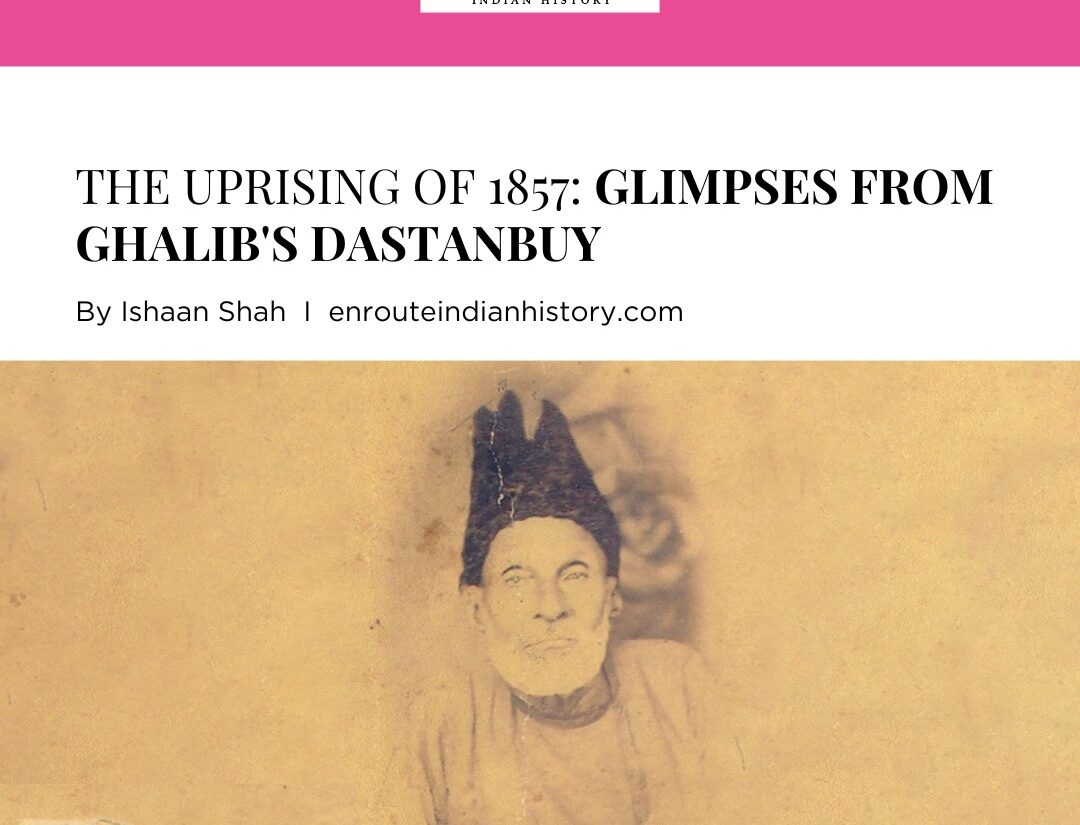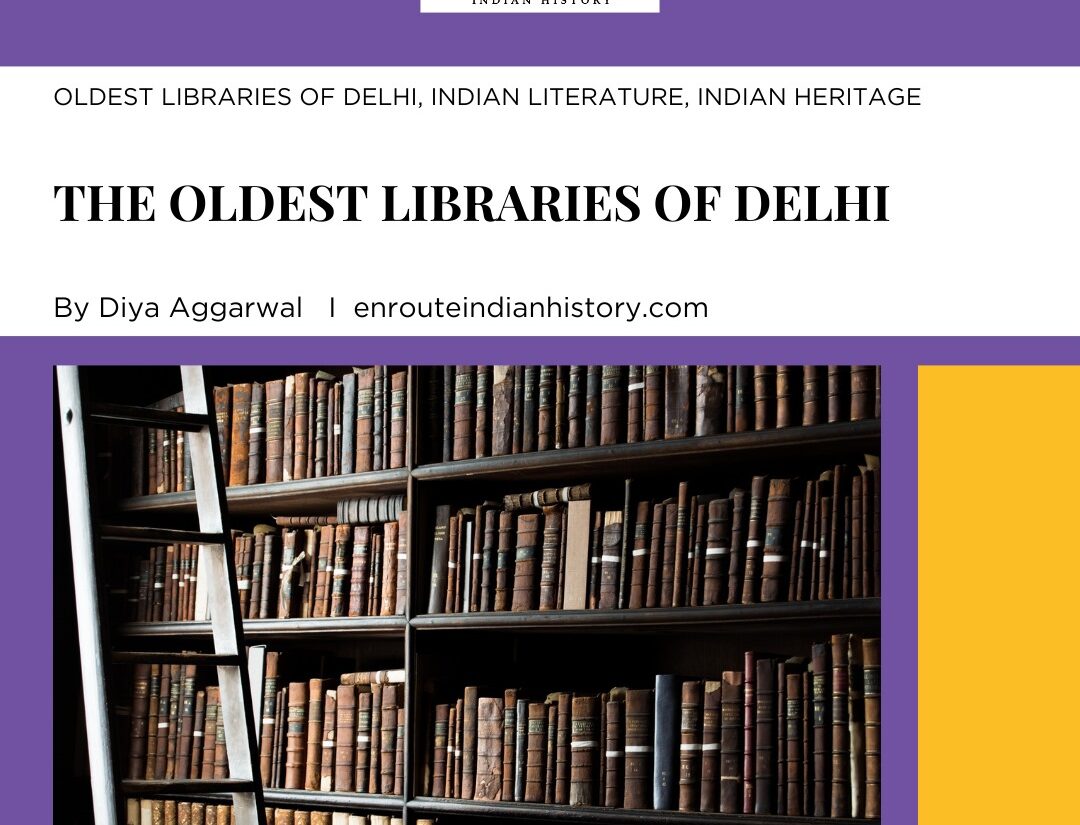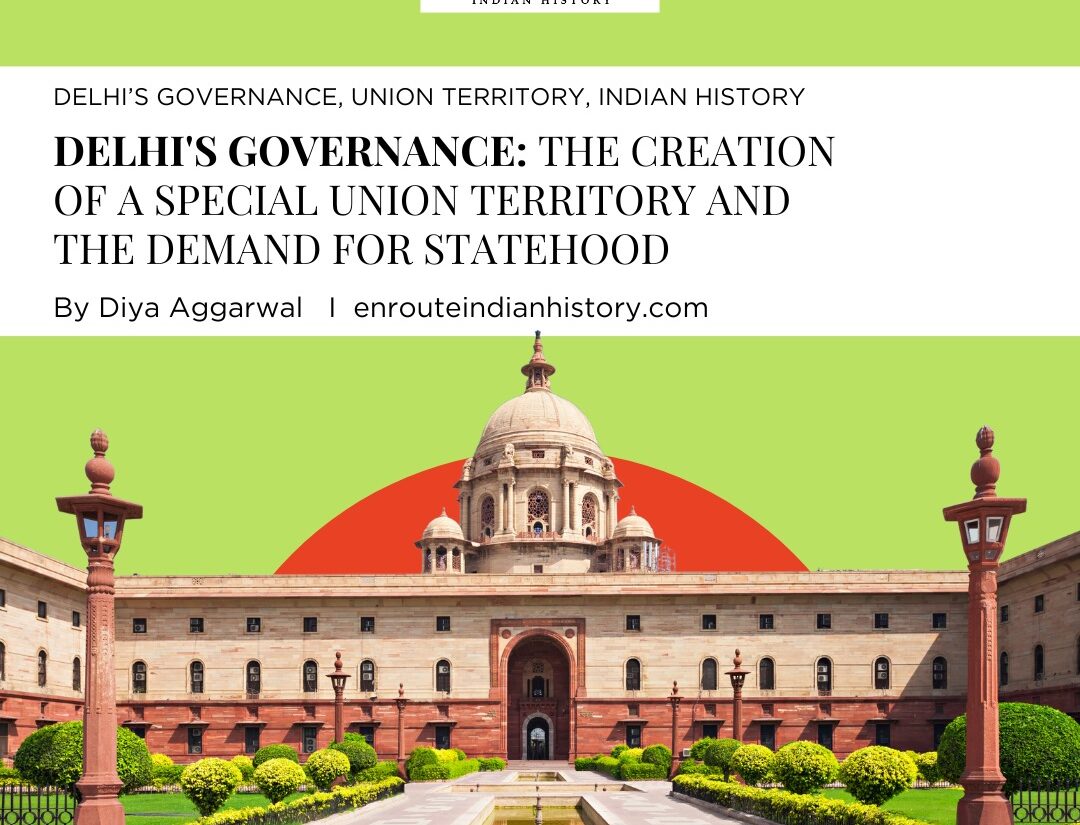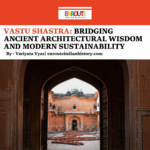How Viceroy’s House in Campus was start of romance for Mountbatten’s?
- EIH User
- February 16, 2024

In 1948, the University of Delhi celebrated its Silver Jubilee to mark 25 years since its establishment. Lord Louis Mountbatten, the last Viceroy of India and then Governor General, was invited to attend the event. During his speech, Lord Mountbatten made an unexpected but pleasant observation. He said, “It is a curious coincidence that Delhi University should be celebrating the silver jubilee of its foundation in 1922; for we were married in that year and have just celebrated our silver wedding. The connection between these two events may not be immediately apparent until I tell you that the room in which I asked my wife to marry me in February 1922 was room no. 13, which is now the registrar’s office.” Lord Mountbatten shared a personal anecdote that revealed his early connection to Delhi beyond his official duties.

(Mountbatten & Edwina – the Viceroy & Vicereine of India, seated upon the Vice-regal thrones
within the Durbar Hall (Throne Room) within The Viceroy’s House, www.lordmountbattenofburma.com,1947)
Prelude: Initial Encounter and the Beginning of Their Relationship
Edwina, a young woman, was the granddaughter of a Jewish banker whose wealth made her powerful in British society. She was well-known for her remarkable organizational abilities and ability to arrange lavish parties, making her one of the most intriguing and opulent debutantes in London high society. Edwina initially met her future husband, Lord Louis Mountbatten, at a society gathering at Claridge’s in London in May 1920. Mrs. Cornelius Vanderbilt II introduced them at this event. They rejoined again at the Cowes Regatta on the Isle of Wight and attended a slew of social events during Society Week, after which he introduced Edwina to his father. After introducing Edwina to his parents, Mountbatten’s father praised her as the most charming and wonderful girl of his generation and said, “She’s got intelligence, character, everything. If you decide to marry her, you have my whole-hearted approval. She’ll make a wonderful wife for you.”
Mountbatten had originally planned to propose to Edwina in September 1921, but unfortunately, his plans were altered due to the untimely passing of his father. In September 1921, Sir Ernest Edwina’s maternal grandfather passed away due to a heart attack at Brook House. Edwina and Mountbatten found comfort in their shared sorrow but ultimately chose not to pursue a romantic relationship due to the financial constraints of his position as a naval officer. Following Sir Ernest’s funeral, Edwina received an invitation to stay with Dame Margaret Greville. Dame Margaret, in her persuasive manner, convinced Edwina to extend an invitation to Mountbatten.
Proposal to Marriage: The Union

Edwina whilst in India in 1921;

Mountbatten with his cousin – Prince Edward ‘David’, The Prince of Wales, www.lordmountbattenofburma.com, 1921)
Mountbatten meanwhile agreed to join his cousin, Prince Edward ‘David’, the Prince of Wales, and later King Edward VIII, on his journey to India and Japan aboard HMS Renown. On October 26, 1921, Edwina joined the Milford Havens in Portsmouth Harbour to witness the Royal Party’s departure. Mountbatten wrote to Edwina throughout his tour of India with his royal cousin, and at his request, she arranged for her to stay with the then Viceroy of India in Delhi and with her great-aunt Mrs. Cassel. On Valentine’s Day, February 14, 1922, they met again at the then Viceregal Lodge. It was at a party hosted for the royal troops, which Mountbatten was excited to attend. After a few rounds of dancing, the couple retired to a small sitting room. It was there that Mountbatten mustered the courage to propose marriage to his beloved. She was overjoyed and immediately accepted the proposal. They were both in their early 20s and had only known each other for a little over a year. But they were set on building a life together. She mentions in her letters that then they “motored out to King Humayun’s enormous tomb, which we saw at 3 a.m. by moonlight” the day after she said yes. Everything was “wonderful and romantic,” and a month later, they went back to Agra to see the tombs of Shahjahan and Mumtaj, which were built in the 1600s (Lownie, 2019).

(An official engagement photograph of Mountbatten and Edwina,http://www.lordmountbattenofburma.com, 1922)
Countess (later Marchioness) of Reading (1866–1930), Dame Alice Isaacs (née Cohen), who was Vicereine at the time, said, “I’m afraid she has made up her mind about him for sure.” I say “afraid” even though I only know that he is too young. Edwina may have heard Lady Reading say that she wanted her to marry “someone older with more of a career before him.” Mountbatten wrote to Edwina’s father and asked for permission to marry his daughter. But the father already knew they were going to marry before the letter arrived. Edwina’s dad was mad, and he even didn’t want the news to come out. Finally, the wedding took place at St. Margaret’s Church, Westminster, London, on July 18, 1922. He married Edwina. The Royal Family, including King George V (1865–1910–1936), was at this important event. Prince Edward “David,” his cousin and The Prince of Wales (later King Edward VIII from 1894 to 1972), was the best man dressed like the Royal Navy’s Captain. The Times newspaper said that the wedding was the most important social event of the decade.

(An official photo portrait of Edwina & Mountbatten following their wedding
with their bridesmaids and best man, www.lordmountbattenofburma.com, 1922)

[Image 1- Entrance of Ball Room (Now Convention Hall) where Edwina and Lord Mountbatten danced,

[Image 2- Viceregal Lodge (Now DU Registrar Office); Pictures by Soham Dutta, November 2022]
A Less Than Ideal Post-Wedding Romance
However, soon after their marriage, cracks appear to emerge in their marriage. The couple had vastly different temperaments and characters, with Mountbatten being methodical and exact while Edwina was zesty and spontaneous. Mountbatten’s attractive personality and reputation for leadership had made him popular, while Edwina had developed a reputation as a “poor little rich girl” who spent her time partying. In 1925, Mountbatten discovered that Edwina had been having affairs, and this continued for many years. Mountbatten learned to view marriage in an unsentimental way. By 1929, it had been decided that Edwina was free to engage in her romances, as long as it was done discreetly. In 1932, Mountbatten himself took a mistress. Both had long-distance relationships: Lady Mountbatten with one of her husband’s staff, and Mountbatten with another employee while overseeing British naval activities in Southeast Asia.
During World War II, both Mountbatten and Edwina’s jobs and lives changed in big ways. She threw herself into charity work and finally found happiness, while his naval victories made him a powerful figure in the kingdom. When Edwina stayed with the viceroy in Delhi in 1945, she found his house unlivable. Two years later, she would return to the same house while her husband, who was now viceroy, argued with the Congress and the Muslim League to decide what would happen to the subcontinent. During a rough patch in the Mountbattens’ marriage, their wife was also going through a hard menopause. She felt like she wasn’t good enough because he didn’t have much time for her. This is when Edwina met Jawaharlal Nehru. That’s how they saw their relationship, and Andrew Lownie says that Edwina finally found “what her husband seemed to lack.” Mountbatten agreed to the deal, even though Edwina didn’t like how much care he was giving to a long-term mistress. It is said that Edwina was found in bed with some of Nehru’s letters when she died suddenly at the age of 59 (Lownie,2019).
Reminiscing about their unconventional bond

(The plaque inside the Registrar’s office, Amal KS/Hindustan Times, May 02, 2022)
The Mountbattens’ marriage had many ups and downs. However, in an age when men often controlled wives, Edwina’s fiery independence and Mountbatten’s ability to accept her for who she was made this a mutually productive relationship. They complimented each other, and she aided his career significantly. Despite their many loves and quite different lives, their letters demonstrate that they still liked one another. In a letter she sent to herself, Edwina stated, “I suppose my affairs with Hugh and Laddie were what you would call serious, but as they never in any way altered my affection and respect for you, I don’t myself think of them as such.” “People came and went, but Dickie remained forever.” Lord Mountbatten reiterated this sentiment in 1948 when he returned to the old Viceregal Lodge, now the Registrar Office of the University of Delhi, to honor the university’s Silver Jubilee and reflected on his proposal to Edwina and their 25-year marriage. Lord Mountbatten’s sentiments about Edwina’s unwavering affection for him, despite her past affairs, further emphasized the strength and depth of their bond. It is evident that their love endured the test of time and remained constant throughout their lives together.
References
- “Memorial and Tribute to Mountbatten – www.lordmountbattenofburma.com.” Mountbatten, www.lordmountbattenofburma.com.
- Pillai, Manu S. “The Many Loves of the Mountbattens.” Mintlounge, 20 Sept. 2019, lifestyle.livemint.com/amp/news/talking-point/the-many-loves-of-the-mountbattens-111641453417795.html.
- Mountbatten, Pamela, and Hicks, India. India Remembered: A Personal Account of the Mountbattens During the Transfer of Power. India, Pavilion Books, 2008.
- Lownie, Andrew. The Mountbattens: Their Lives & Loves: The Sunday Times Bestseller. United Kingdom, Blink Publishing, 2019.
- Correspondent, Ht. “DU At 100: The Registrar’s Office, Where Mountbatten Proposed to Edwina.” Hindustan Times, 2 May 2022, www.hindustantimes.com/cities/delhi-news/du-at-100-the-registrar-s-office-where-mountbatten-proposed-to-edwina-101651494447512.html.























